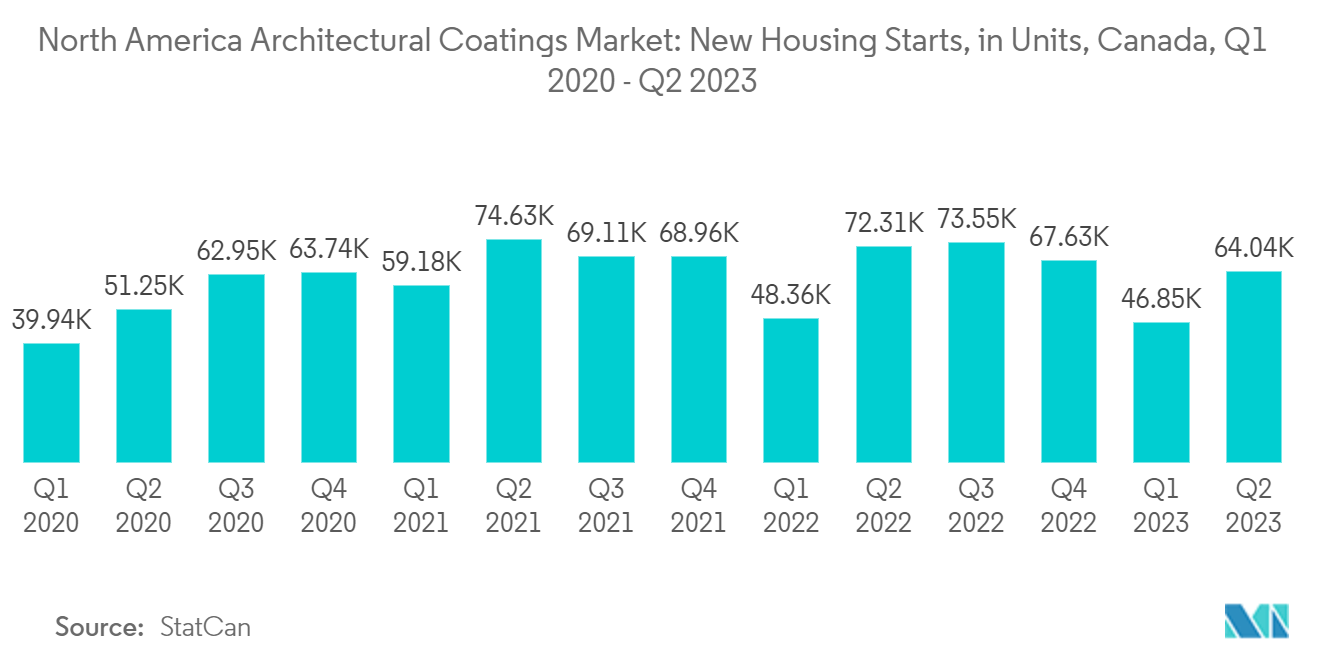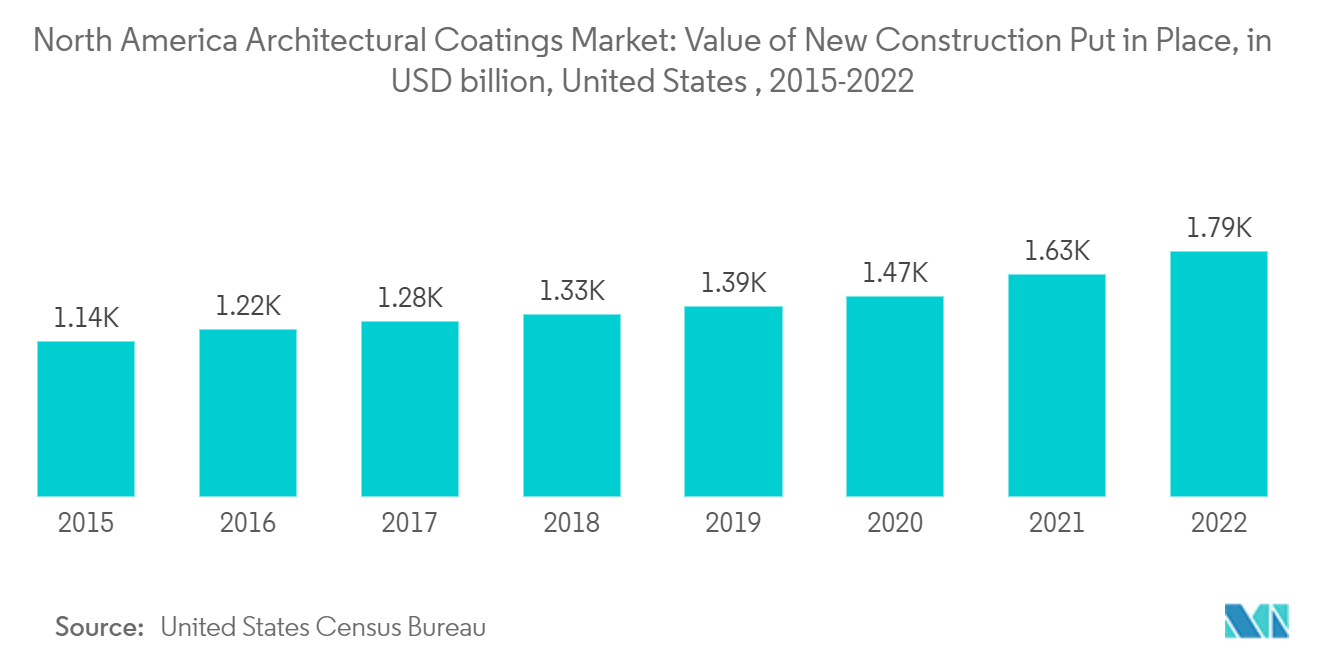Market Trends of north america architectural coatings Industry
Residential Segment is Expected Dominate the Market
- Architectural paints and coatings include interior and exterior house paints, primers, varnishes, sealers, and stains.
- These paints and coatings are critical in providing air barriers essential for energy-efficient building enclosures. In residential buildings, air barriers provided by architectural coatings stop the flow of air through the building, protect the structure, and increase the efficiency of heating and cooling systems.
- These air barriers also contribute to the energy efficiency performance requirements found in all green building standards.
- In the North American region, the increased government spending in the real estate market for residential construction and the growing demand for high-class residential homes are likely to benefit the market's growth. In addition, rising real estate costs, particularly the development of single-family homes and multistory apartments in the region, are anticipated to boost the architectural paints and coatings market further.
- Moreover, the rising household income levels, combined with the population migrating from rural to urban areas, are expected to continue to drive the demand for the residential construction sector in North America. The increased focus on affordable housing by both the public and private sectors is driving the growth in the residential construction sector in the region.
- According to the Canadian Construction Association, the construction sector is one of Canada's largest employers and a major contributor to the country's economic success. The industry generates about USD 141 billion annually and contributes 7.5% of the country's gross domestic product (GDP).
- Further, according to StatCan, there was an increasing trend in new housing constructions in Q2 2023, where around 64,042 units of new housing were started.
- As Canada's economic recovery from COVID-19 continues, supply chain disruptions and labor shortages contribute to the challenges felt across most industries, and the construction sector is no exception. However, residential and non-residential investments are increasingly recovering from the early pandemic slowdown.
- Due to increased investments in 2022, the consumption of paints is expected to be high in 2023. This growth scenario is further expected to continue till 2024 due to the government's upgradation of immigration targets in 2024.
- From the above points, it can be inferred that the residential segment is set to play the dominant role in the North American architectural coatings market during the forecast period.

United States is the largest segment by Country.
- The United States is one of the world's largest and most powerful economies. However, the country's GDP declined to -2.8% in 2020, severely impacted by the pandemic. Furthermore, the country recorded a growth of 5.9% in 2021, and it reached about 2.1% in 2022. In 2023, the IMF has estimated that the GDP would grow by about 1.6%.
- The United States boasts a colossal construction sector with over 7.6 million employees. Playing a prominent role in commercial and residential construction, the US construction sector significantly contributes to the country's economy. Due to increasing construction activities in the United States, the consumption of architectural paints and coatings in the country is expected to increase.
- In the United States, residential paint consumption grew substantially in 2020. This was due to the residential repaint segment, which saw the highest jump in consumption, especially in the DIY paint market, as people remodeled their homes to build new work-from-home environments.
- The United States has one of the world's largest construction industries, valued at USD 1,630 million in 2021 and USD 1,790 million in 2022. The country accounts for around 10% of global construction spending. Furthermore, the commercial construction value in the United States was registered at USD 114.79 billion in 2022, compared to USD 94.95 billion in 2021.
- According to the US Census Bureau, the value of private construction in 2022 was USD 1,429.2 billion, 11.7% (± 1.0%) higher than the USD 1,279.5 billion in 2021. Residential construction spending in 2022 was USD 899.1 billion, up by 13.3% (±2.1%) from USD 793.7 billion in 2021, while non-residential construction spending amounted to USD 530.1 billion, down by 9.1% (±2.1%) from USD 485.8 billion in 2021. 1.0%).
- Additionally, the country is upgrading its existing airports. Some of the upcoming major airport expansion projects include the reconfiguration of the runway system at Chicago O'Hare International Airport, the construction of new ticketing areas and the addition of new security checkpoints at the Denver International Airport, the construction of a new international terminal at Houston George Bush Intercontinental Airport, the construction of a 2.25-mile automated people mover and new parking facilities at Los Angeles International Airport, the addition of 15 gates and an Intermodal Terminal Facility to link with rail systems at Orlando International Airport, building a new terminal at New York LaGuardia Airport, doubling the capacity of San Francisco International Airport's international terminal, and many more.
- Therefore, all the aforementioned factors are likely to affect the demand for architectural paints and coatings in the country in the coming years.


